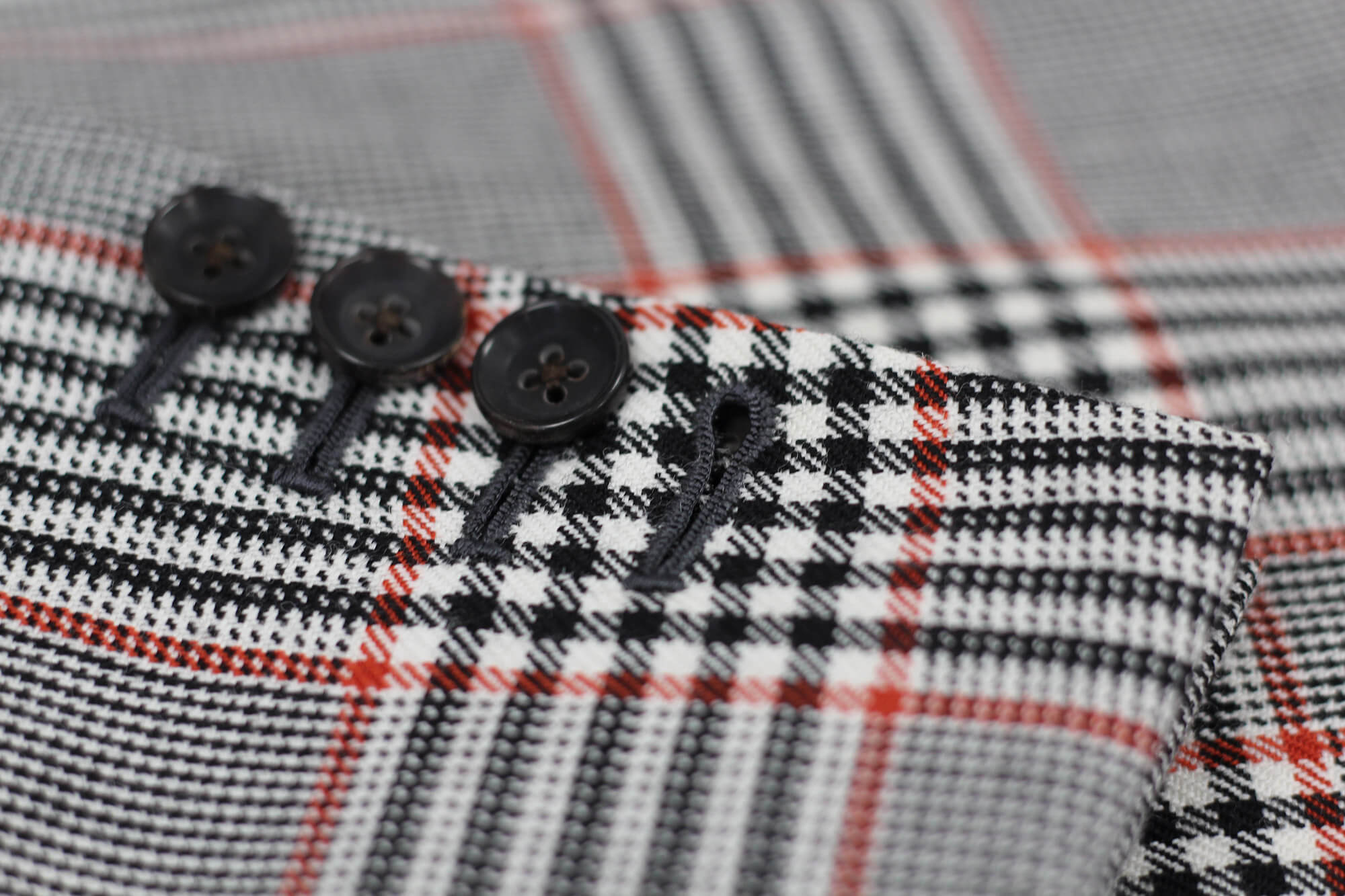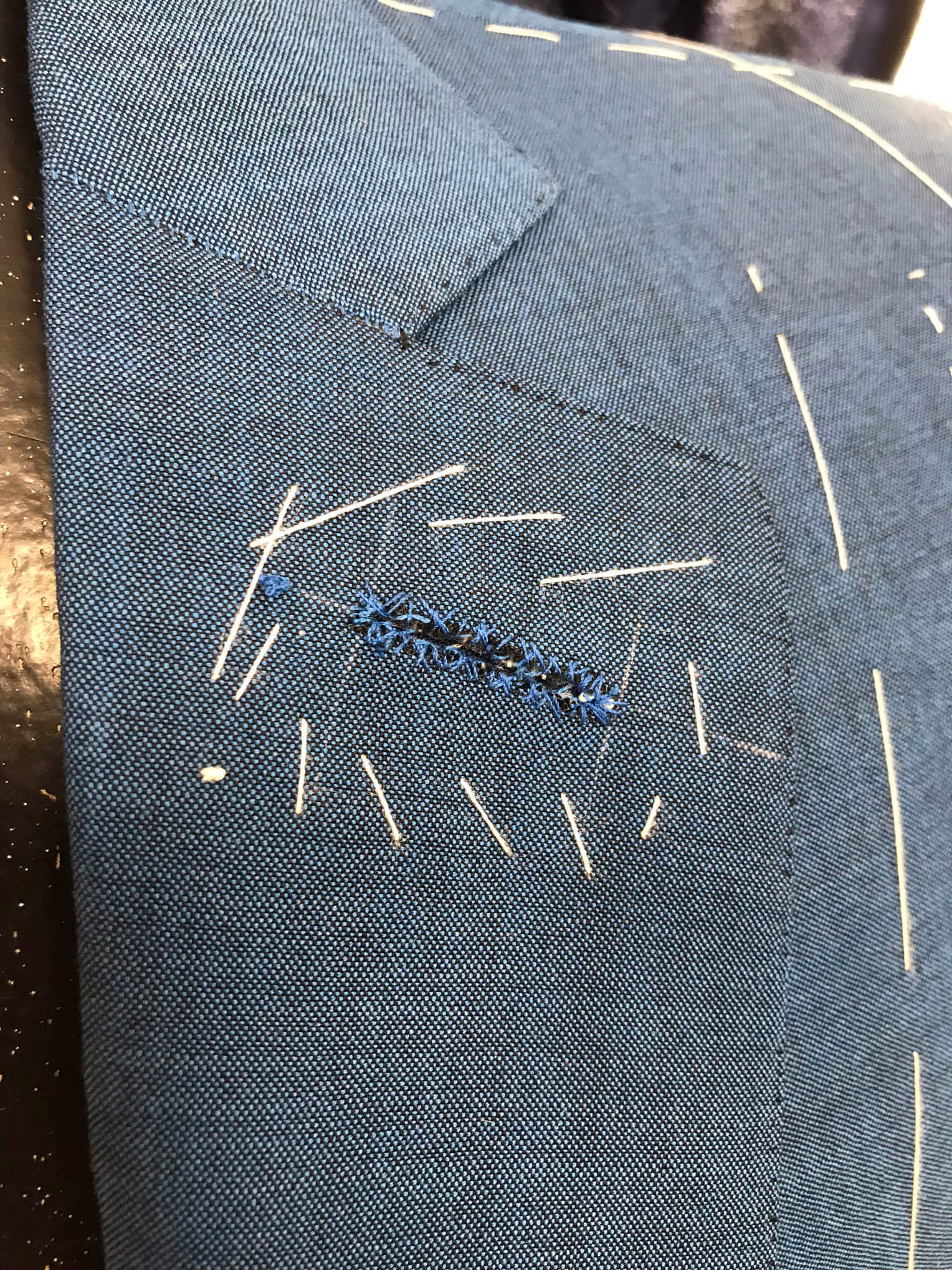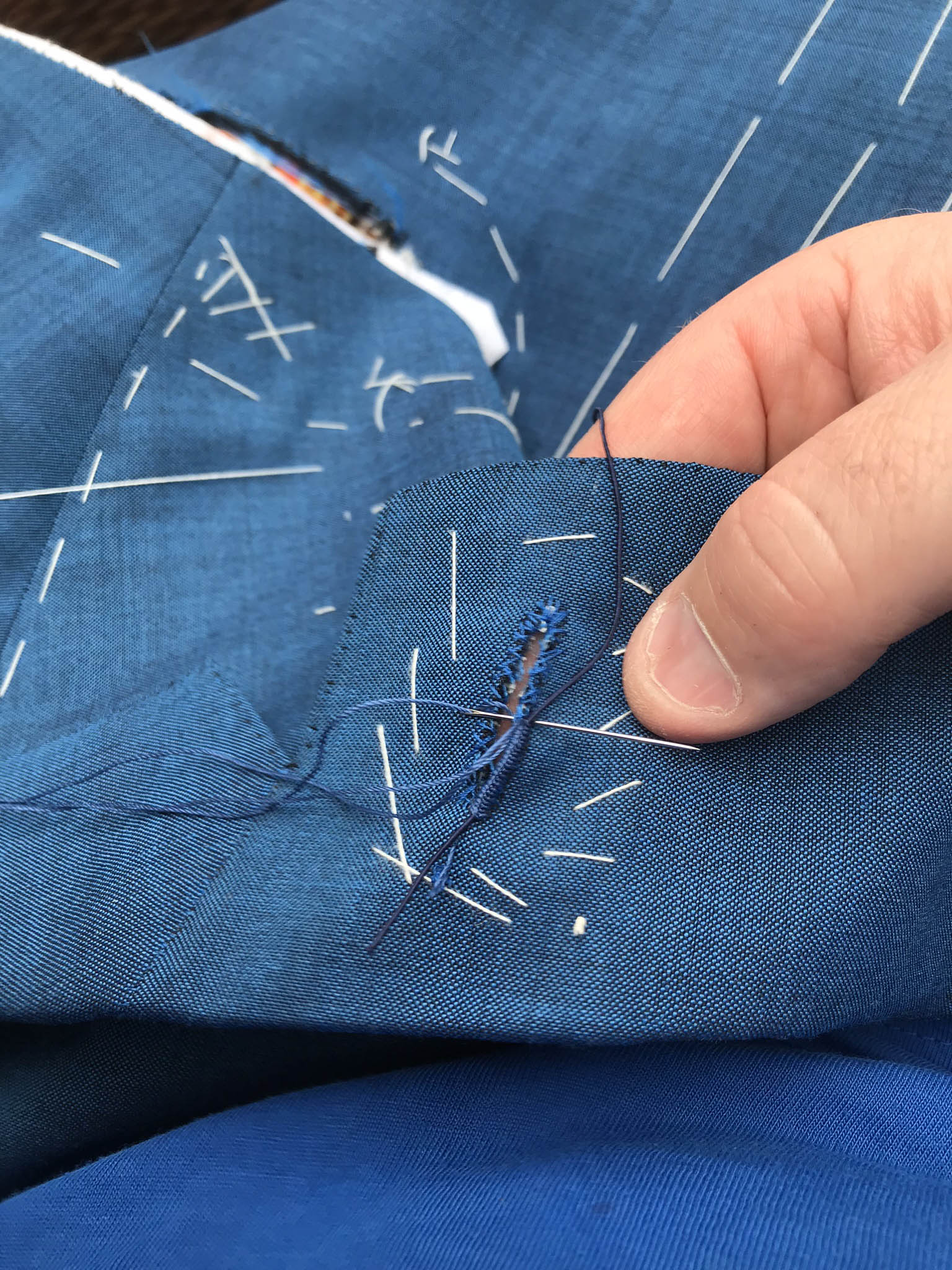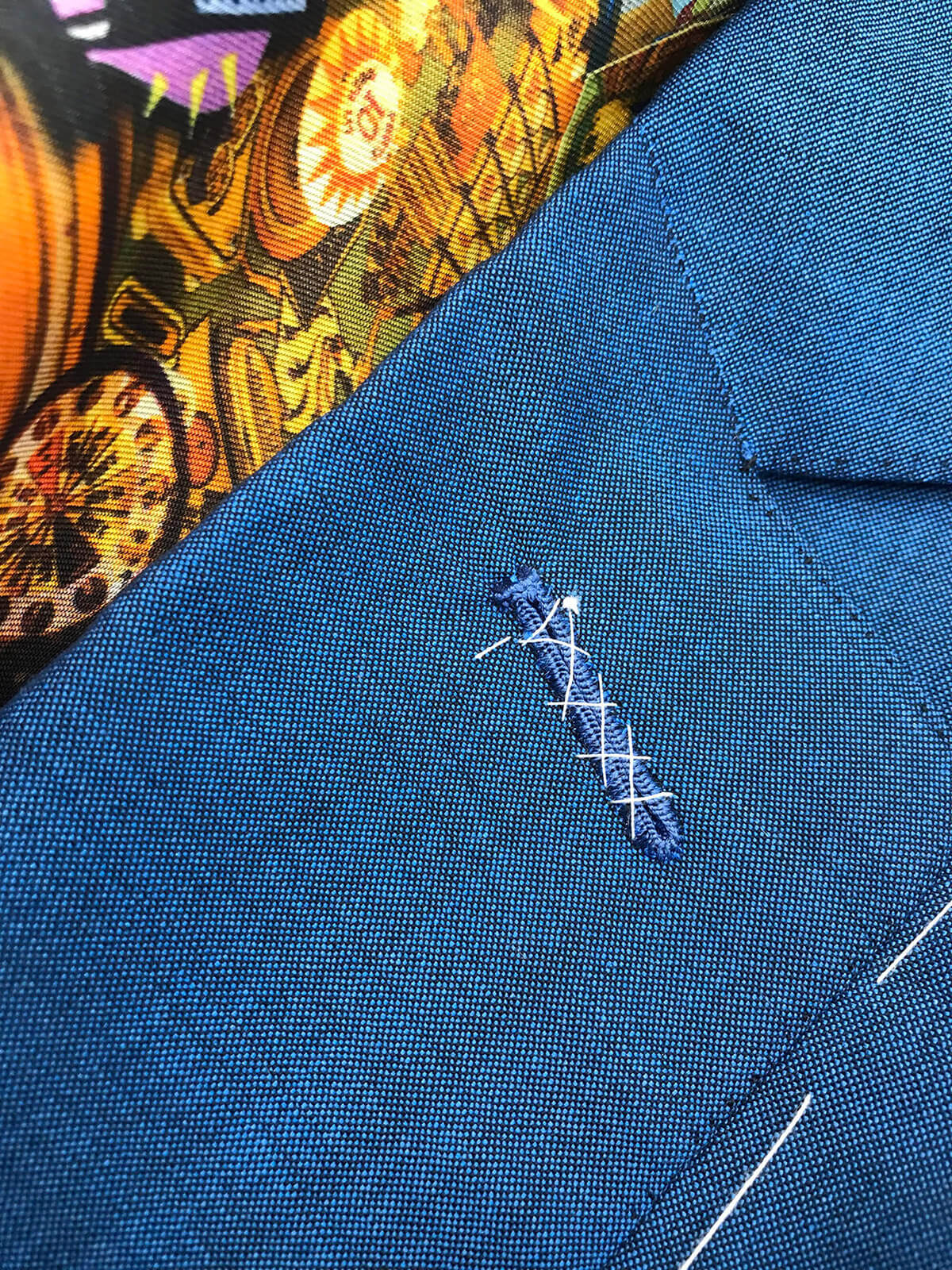24 Jul, 2018
Handmade Buttonholes

Email me des@desmerrion.com
Find Us
Desmond Merrion Bespoke Tailor
59, Bridge Street, Castleford, WF10 1HH.
24 Jul, 2018

Handmade buttonholes are one of the most important hand stitches used by the tailor, and have a distinct bearing on the general appearance of a finished garment-more especially of a bespoke coat. For the proper understanding of this buttonhole it may be as well to describe the whole process of making handmade buttonholes. Wherever there are a number of handmade buttonholes, care must be taken to cut them all the same length, and never longer than required. A too long buttonhole appears sprawling and ungainly, and for strength and appearance a handmade buttonhole should never be worked shorter than it is cut.
The first thing is to mark the buttonholes straight, in their proper direction and at correct distances apart. After marking, they must be cut. If the buttonhole is to have an eye, the coat must be turned around so that the edge is away from you, and the piece for the eye cut out; this, except in the case of heavy materials need not be large. The piece should be cut out clean, and be of a roundish oblong form.

The next step, and the first towards the actual working of the hole, is the barring; which consists of carrying the gimp round the hole at a distance from the edge, according to the width it is intended to make the buttonhole. This is a guide towards regulating the width of stitch all round.
To begin working or making the buttonhole, place the right-hand side (if left handed) of the hole between the right finger and thumb, with the side of the hole lying along the finger.
Now press the point of the needle through the hole to its under section, then upwards through the material so that it comes out on the upper side and just outside the gimp which has already been done. Before pulling out the needle, take the two threads hanging from the eye of the needle and pass it over the point and away from the body.
Next draw out the needle and with an upward and forward movement pull the thread home, when the first purl stitch will have been formed.

When making the stitches round the eye of the hole, they should be more thicklyor closely placed than along the edge.
On reaching the end of the finishing side of the hole the last stitches of the two sides should, with the needle, be brought close together, and then bound closely by a couple of stitches formed by padding the needle up and down alternate sides, finished off by two or three looped stitches formed over the cross ones.

Very much depends upon the appearance of handmade buttonholes, therefore make certain strain or tension on the thread is kept the same throughout the operation. Special care should be taken when making the turn at the eye of the buttonhole, particularly at the points where the sides converge into the rounded section, or eye. After the hole has been completed, the eye should be given its final shape by inserting a pencil tip, giving it a few twists or turns to even up the stitches which may not be correctly placed.